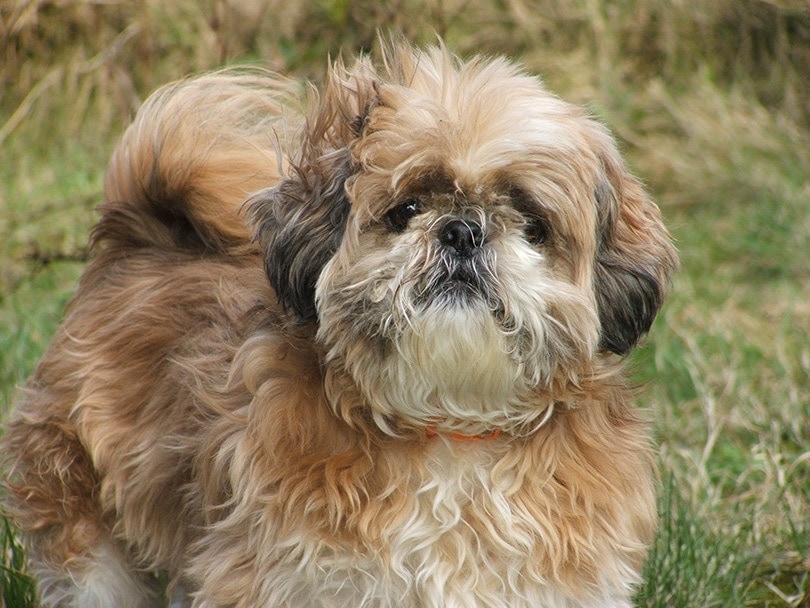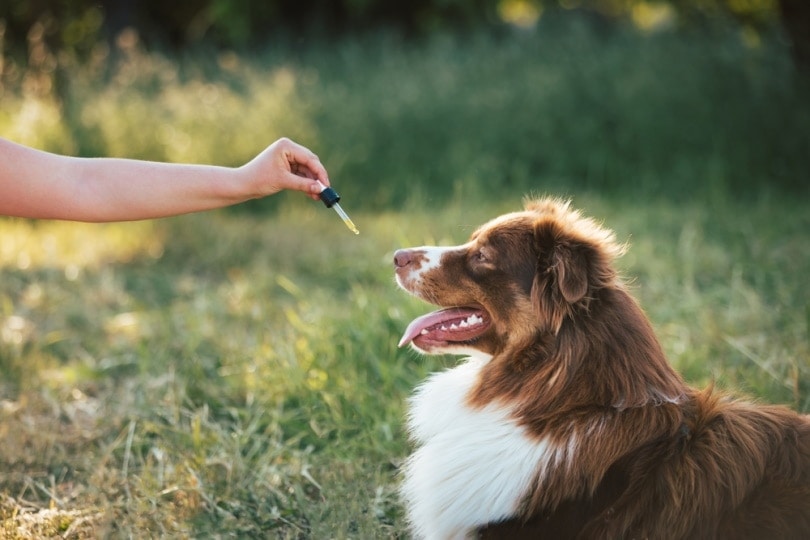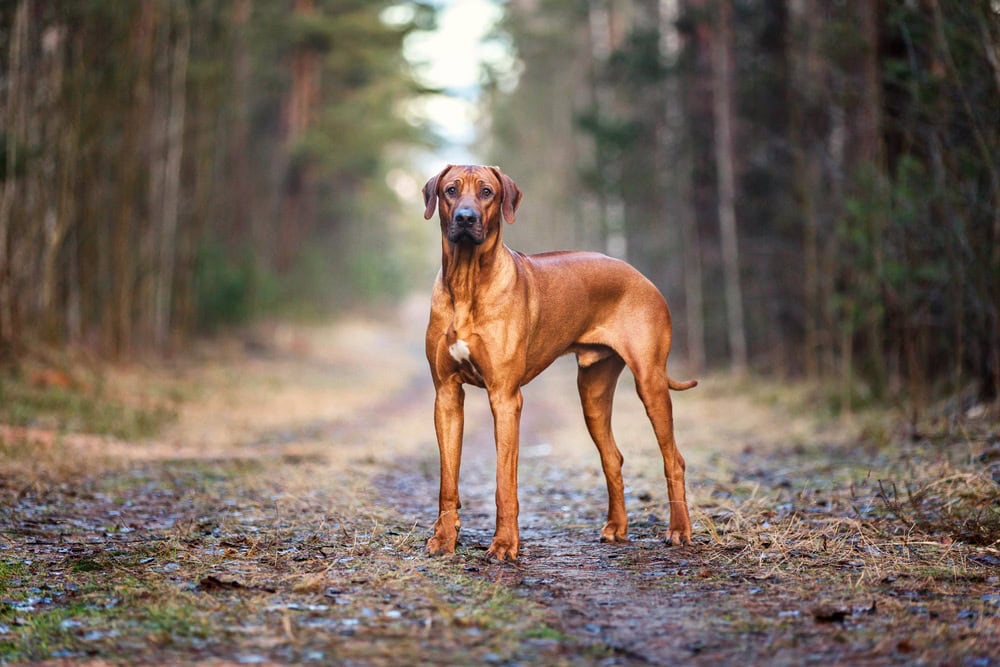How to Teach a Dog to Sit Pretty in 5 Simple Steps
Updated on
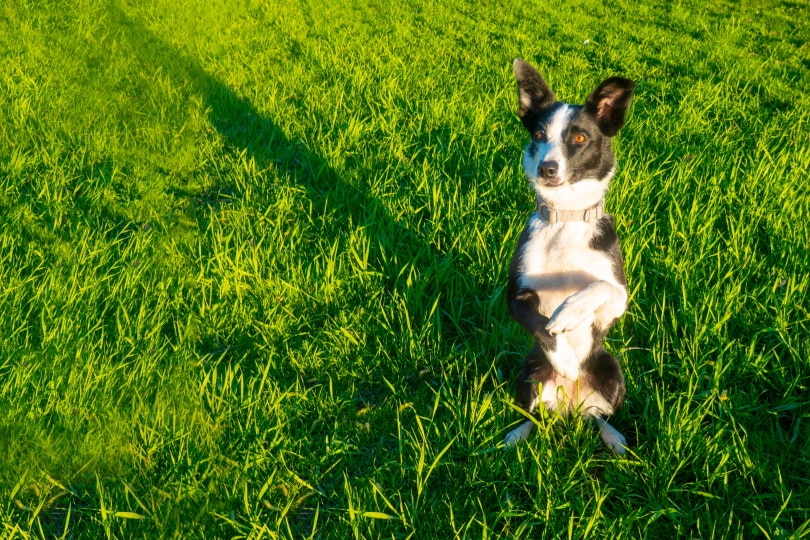
Sitting pretty is a simple trick that you can teach your dog easily at home. The trick is also referred to sometimes as “sitting up” or “begging.” From a sitting position, the dog sits back and raises two front paws in the air.
This is a cute trick for your dog to learn because it can showcase their manners. Asking your dog to sit pretty before receiving a treat, meeting a new person, or being fed a meal shows that your dog can follow commands and has patience.
In this article, we show you how to teach this to your dog in five simple steps.
Before You Start
Treats are crucial when training your dog to do anything, but the types of treats that you use are just as important. Using your dog’s normal treats may work, but if it’s something that they get regularly, it won’t hold their interest as much.
To keep your dog focused during training, use high-value treats. Low-value treats mean that your dog is used to them and would leave them in order to get something else. For example, which would your dog choose first: a piece of chicken or their normal dog treat? Whichever they’d choose first is considered high value. High-value treats are those that your dog doesn’t get all the time, so they are exciting and can hold your dog’s attention for longer periods.
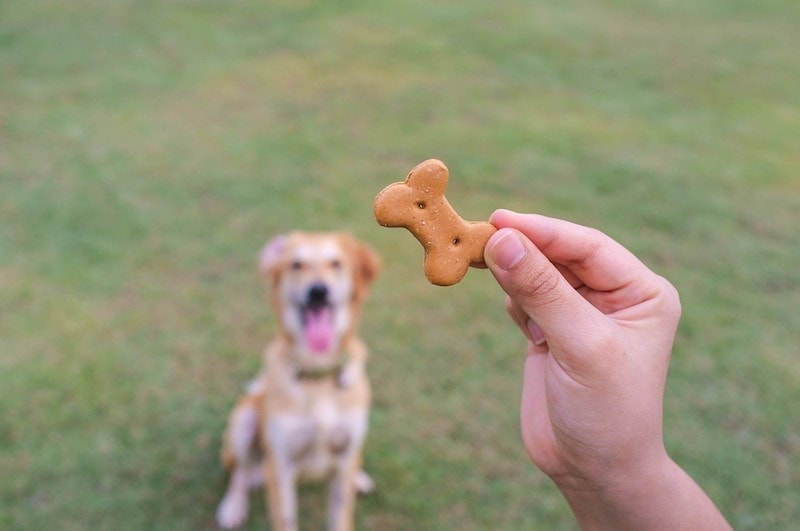
- Cooked chicken
- Cooked steak
- Cheese
- Freeze-dried meat
- Liver sausage
Once you have your high-value treats ready, you can start the training session with your dog.
Five Steps to Teaching Your Dog to Sit Pretty
Getting your dog to sit pretty starts with having them sit. If they don’t know the sit command, teaching them this will be helpful before you move on to sitting pretty.
1. Paw Lifting
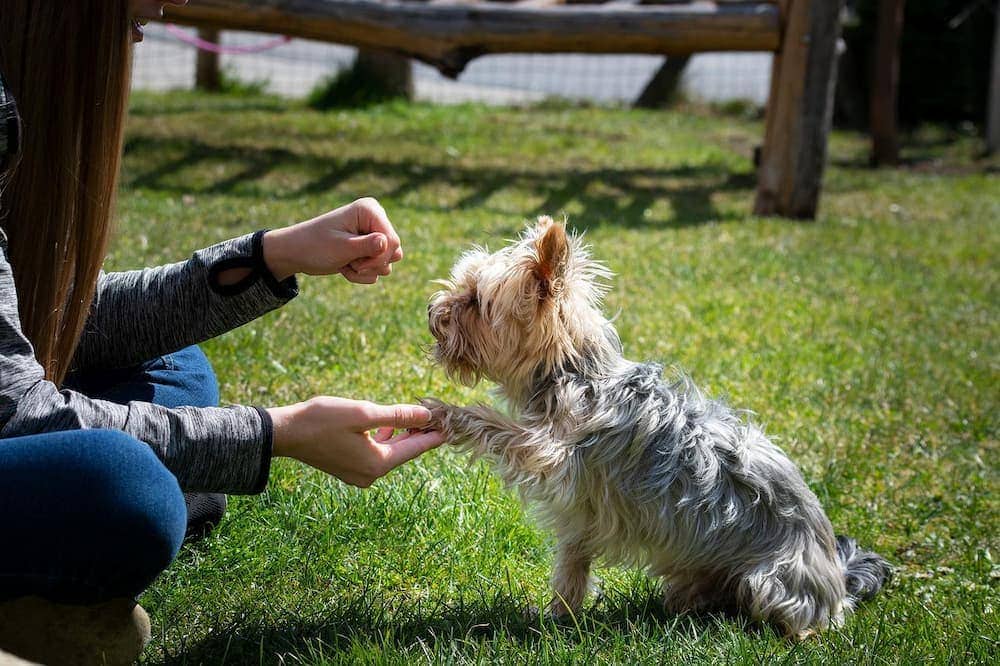
With a high-value treat in your hand, ask your dog to sit. Hold the treat by their nose so they can smell it, but don’t give it to them. Instead, raise your hand straight up in the air from their nose while holding the treat until your dog lifts their paw off the ground. The second that your dog’s paw leaves the ground, reward them with a word or phrase like, “Good!” or “Good dog!” or “Yes!” This word will be known as your positive marker for a job well done. Then, instantly give them the treat. Try to use the same word or phrase each time to let your dog get familiar with the sound and know that they are doing the correct behavior.
2. Double Paw Lifting
Once your dog has mastered the paw lift, you can move on to the double paw lift. Start with your dog in the sit position and repeat step one so they lift one paw off the ground. Once they’ve lifted it, raise the treat up farther until your dog stretches to reach it and lifts both paws off the ground. The second that they do this, reward them with your marker word or phrase and give them the treat. Be sure to give your dog plenty of praise.
3. Higher Paw Lifting
When your dog lifts both paws off the ground like a pro, it’s time to ask them to do it higher. Once both paws are off the ground, lift the treat more so they raise their paws higher. You want your dog to shift their weight back and sit up straighter with their paws higher in the air. If they manage to do this for a second and then drop back down again, pause for 5 seconds and don’t give them the treat yet. Then try again. Work towards gradually increasing the time, reinforcing sit holds only as they increase in length. Once they can do this, reward them with your positive marker word, treats, and praise.
Work at this until your dog can shift their weight back and sit higher, holding the position for a few seconds.
4. Name the Command
Choose the name that you want to use for this command. Telling your dog to “sit pretty” is common. Other names are “beg,” “sit up,” or “paws in the air.” Whatever you choose, stick with it. This will be what you say when you want this dog to perform the action, and you don’t want to confuse them.
Repeat steps 1–3 and when your dog is sitting with their paws in the air, say the command. For instance, say, “Sit pretty!” and then give your dog the treat.
This will have to be repeated plenty of times before it’s smooth and your dog associates the command with the action.
5. Stop Using the Lure
To teach your dog this trick, you used high-value treats to lure them into the correct position. Now, you should reduce your use of the treats and get your dog to sit pretty just by saying the command. This will take a while, but it can be achieved.
When your dog is sitting, give the command, and then raise your hand with the treat in it to the appropriate height quickly, without letting your dog follow it with their nose to lure them into the position. Use a hand signal to show them that you want them to go up. Have them understand that you want them to sit up without convincing them to do it with the treat.
Once your dog sits up correctly, reward them with the treat and praise. This will take a few repetitions, but don’t give up. Soon, they should just be responding to your words and the hand signal without you holding a treat over their head. When they do sit pretty, always reward them with treats and praise.
Training Tips
Keep training sessions short so your dog doesn’t lose interest or begin to associate the training with negative feelings. Once your dog seems to be distracted, it can be hard to get their attention again. Keep the sessions to just 10–20 minutes each day and end while your dog is still interested in the activity.
Use positive reinforcement. If you raise your voice or get frustrated, your dog may begin to fear training. You want the experience to remain positive for them. If they won’t focus, try again another time. If they don’t perform the trick correctly, keep moving on until they do. Patience is the key.
Time the training sessions so they’re at the times when your dog is the most active and alert. When they’re sleepy or full from a meal, they may not be able to focus on what you want them to do. If they’re hungry, a high-value treat will look even more appealing to them.
Final Thoughts
Teaching your dog to sit pretty is not difficult, but the results will vary. Some dogs take longer to learn new tricks than others. Don’t expect too much from your dog too quickly. Work at their pace, and use positive reinforcement to keep the training a fun experience for them. By patiently following — and repeating — these steps, you can soon have your dog sitting pretty.
Featured Image Credit: kajasja, Shutterstock




